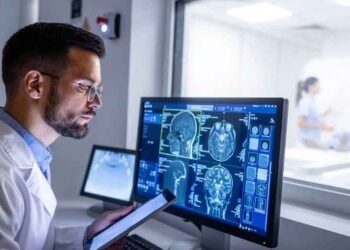Blind spots are dangerous for cyclists, especially when drivers are not paying attention. These areas, which drivers cannot see in their mirrors, can hide nearby cyclists. If drivers don’t focus, cyclists might face serious accidents, especially during lane changes, turns, or other movements that require awareness of their surroundings. It is crucial to address the issue of drivers ignoring blind spots to improve road safety and protect those on bicycles.
Cyclists are at greater risk because they are smaller than cars. When drivers don’t see them, it can lead to harmful collisions. Promoting active observation and introducing safety measures can help lower these risks. Understanding how blind spots cause accidents encourages safer behavior for everyone on the road.
The Unique Vulnerabilities Cyclists Face Around Blind Spots
Cyclists face unique dangers on the road that often go unnoticed by other motorists. Their smaller size and lack of protective barriers make them particularly vulnerable to accidents, especially those caused by blind spots. A momentary lapse in a driver’s attention can lead to serious consequences for a cyclist.
Incidents often occur near intersections or during heavy traffic, where numerous vehicles compete for limited space. The combination of restricted visibility and the narrow lanes cyclists must navigate creates hazardous conditions. When drivers fail to check their blind spots or properly use their mirrors, they may inadvertently put cyclists at risk.
Addressing these vulnerabilities is essential for improving safety. Educating drivers about the specific challenges cyclists face, along with promoting better driving habits, can significantly reduce the number of accidents.
Common Scenarios Where Blind Spot Negligence Endangers Cyclists
Failing to monitor blind spots can lead to serious, preventable accidents involving cyclists. Below are some common scenarios where negligence in checking blind spots endangers cyclists:
- Lane Changes: Motorists often merge into lanes without realizing a cyclist is in their blind spot, assuming the lane is clear.
- Right-Hand Turns at Intersections: Cyclists traveling straight are frequently overlooked when drivers make right turns, creating a high-risk situation.
- Parking Lot Exits: Drivers exiting parking lots may fail to notice cyclists approaching from the side, resulting in collisions.
- Highway Entrances: Cyclists can be obscured from view when vehicles merge onto highways, especially during busy traffic conditions.
Technology’s Role in Reducing Blind Spot Accidents
Modern advancements in vehicle technology are making significant strides in addressing blind spot negligence. Features like blind-spot monitoring systems and cameras alert drivers to the presence of cyclists and other vehicles in hidden zones. These tools prove especially beneficial for larger vehicles, where blind spots tend to be more pronounced, enhancing overall situational awareness.
Cyclist-detection systems found in some vehicles take safety a step further. These systems actively identify nearby cyclists and provide warnings to the driver, increasing awareness and protecting those who are more vulnerable on the road.
Supporting the integration of these technologies across all vehicle models plays a crucial role in reducing blind spot-related accidents. Embracing innovation in vehicle safety features contributes to creating safer roads for cyclists and other vulnerable road users.
Legal Consequences of Blind Spot Negligence
Negligence in monitoring blind spots carries serious legal implications, especially when it results in harm to cyclists. Motorists may face liability for damages, medical expenses, and even punitive measures if their failure to check blind spots causes an accident. Cyclists involved in such incidents often require legal support to ensure their rights are upheld and they receive fair compensation.
Seeking assistance from professionals like Seattle bicycle accident attorneys can help injured cyclists deal with these complex legal matters. Legal recourse not only provides justice for victims but also serves as a deterrent, encouraging motorists to adopt safer practices and remain accountable on the road.
The Importance of Driver Education and Training
Improved driver education is essential in preventing blind spot accidents. Emphasizing the importance of blind spot checks during training encourages new drivers to develop these critical habits early in their driving experience. This foundational knowledge can significantly reduce the risk of accidents related to blind spots.
To complement driver training, public awareness campaigns play a vital role in reminding experienced drivers to stay vigilant. These initiatives help reinforce safe driving practices and keep the importance of blind spot awareness at the forefront of drivers’ minds.
Additionally, using interactive training tools and real-world simulations allows drivers to understand the risks associated with blind spot negligence firsthand. These methods not only foster empathy for cyclists and other road users but also contribute to reducing risky behaviors and enhancing overall road safety. Ongoing education remains a key strategy in tackling this persistent issue.
Proactive Steps Cyclists Can Take to Avoid Blind Spot Hazards
Although motorists hold the primary responsibility for managing blind spots, cyclists can take proactive measures to enhance their safety. These strategies can help cyclists stay visible, anticipate risks, and navigate roads more safely:
- Wear Bright or Reflective Clothing: Ensuring visibility is key, especially during low-light conditions. Bright clothing and reflective gear make cyclists easier to spot.
- Use Lights and Reflectors: Equip bicycles with front and rear lights, as well as reflectors, to increase visibility to drivers.
- Avoid Lingering in Blind Spots: Position yourself strategically by staying out of vehicle blind spots whenever possible, especially near larger vehicles like trucks.
- Maintain Situational Awareness: Stay alert to your surroundings and anticipate potential hazards to react quickly and effectively.
- Practice Defensive Riding: Adopt cautious riding habits and understand common blind spot risks to minimize exposure to dangerous situations.
Advocacy and Policy Changes to Protect Cyclists
Advocacy efforts play a significant role in reducing accidents related to blind spots. Cyclist organizations and road safety groups work tirelessly to promote awareness and push for policy changes that protect vulnerable road users. Implementing stricter regulations, such as requiring blind-spot monitoring systems in all vehicles, can significantly enhance cyclist safety.
Collaboration between policymakers, advocacy groups, and the public ensures that cyclist safety remains a priority. Increased funding for public education campaigns and infrastructure improvements, such as dedicated bike lanes, also contributes to reducing blind spot accidents. Advocacy efforts serve as a catalyst for change, driving the collective responsibility to protect cyclists on the road.












